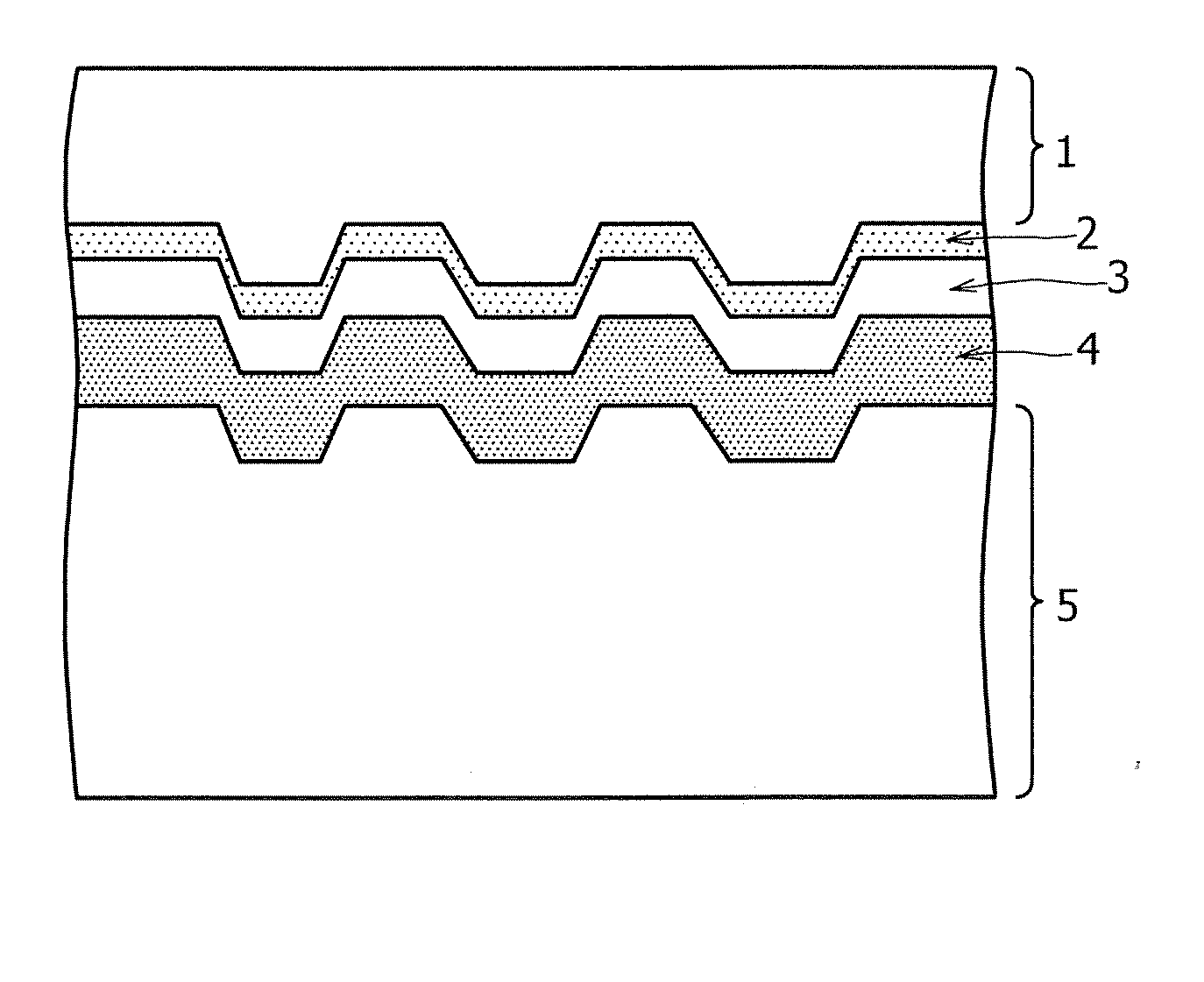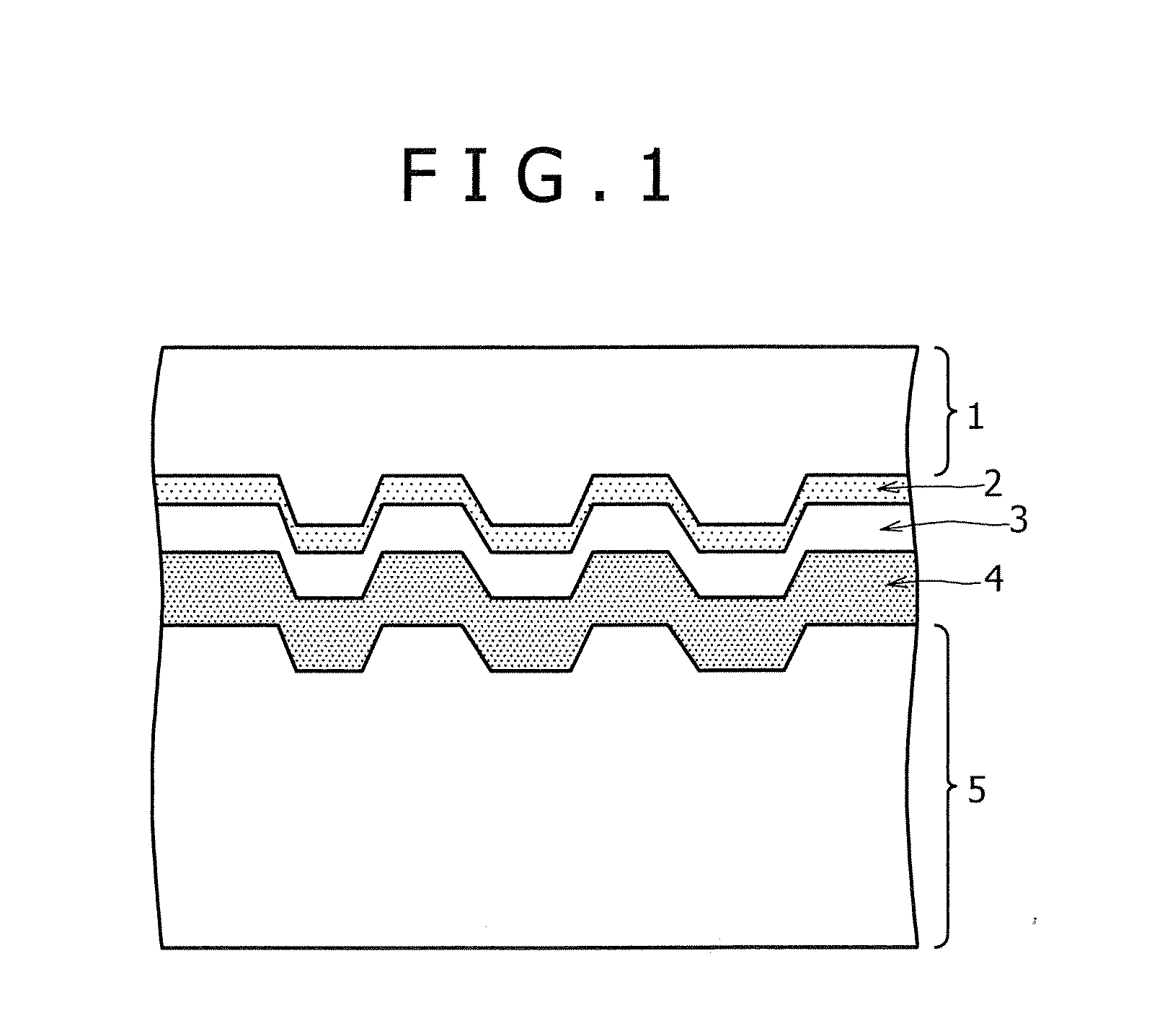Silver alloy reflective films for optical information recording media, silver alloy sputtering targets therefor, and optical information recording media
- Summary
- Abstract
- Description
- Claims
- Application Information
AI Technical Summary
Benefits of technology
Problems solved by technology
Method used
Image
Examples
experimental example 1
[0043] Ag alloy thin films having the compositions in Table 1, namely, Ag—Nd—In alloy thin films (Ag alloy thin films containing Nd and In) [Nos. 1 to 5], Ag—Gd—In alloy thin films [Nos. 6 to 10], and Ag—Y—In alloy thin films [Nos. 11 to 15] were deposited. On these thin films, the relations between the contents of Nd, Gd, and Y and the melting temperature, thermal conductivity, reflectivity, and laser power in marking according to burst cutting area (BCA) system (hereinafter referred to as “BCA marking”) were determined.
[0044] The thin films were deposited in the following manner. On a polycarbonate substrate having a diameter of 120 mm and a thickness of 0.6 mm were deposited Ag—Nd—In alloy thin films, Ag—Gd—In alloy thin films, and Ag—Y—In alloy thin films, respectively, by DC magnetron sputtering. The deposition was carried out at a substrate temperature of 22° C., an Ar gas pressure of 3 mTorr, a deposition rate of 30 nm / sec, and a back pressure of 5×10−6 Torr or less. The spu...
experimental example 2
[0049] Ag alloy thin films having the compositions in Table 2, namely, Ag—Nd—In alloy thin films [Nos. 1a to 3a], Ag—Nd—Sn alloy thin films [Nos. 4a to 6a], Ag—Nd—Al alloy thin films [No. 7a], and Ag—Nd—Mg alloy thin films [No. 8a] were deposited, the melting temperatures, thermal conductivities and reflectivities of the resulting thin films were measured, and the laser powers in BCA marking to the thin films were determined by the procedures of Experimental Example 1.
[0050] The results are shown in Table 2. For the compositions, the Nd content was fixed at 5% in all the thin films, and the contents of In and Sn were varied. Specifically, the In content was varied in the thin films Nos. 1a to 3a, and the Sn content was varied in the thin films Nos. 4a to 6a. As the Nd content was fixed at 5%, these Ag alloy thin films satisfy the requirements of the total content of at least one rare-earth element of 1% to 10%, the total content of at least one rare-earth element and the at least o...
experimental example 3
[0053] Ag alloy thin films having the compositions in Table 3, namely, an Ag—Nd—In alloy thin film [No. 1b], Ag—Nd—In—Bi alloy thin films [Nos. 2b to 4b], and Ag—Nd—In—Sb alloy thin films [Nos. 5b to 7b] were deposited by the procedure of Experimental Example 1. All the thin films had a thickness of 100 nm. The reflectivities of the Ag alloy thin films were measured at a wavelength of 405 nm. The Ag alloy thin films were then subjected to tests under conditions of high temperatures and high humidity (environmental tests), and the reflectivities after the tests were determined. Thus, changes (decreases) in reflectivity of the thin films due to the environmental tests were determined. The environmental tests were conducted at a temperature of 80° C. and humidity of 85% relative humidity (RH) for a holding time of 96 hours.
[0054] The results are shown in Table 3. Table 3 demonstrates that the reduction in reflectivity after the environmental test is prevented by the addition of Bi or ...
PUM
| Property | Measurement | Unit |
|---|---|---|
| Percent by atom | aaaaa | aaaaa |
| Percent by atom | aaaaa | aaaaa |
| Percent by atom | aaaaa | aaaaa |
Abstract
Description
Claims
Application Information
 Login to View More
Login to View More - R&D
- Intellectual Property
- Life Sciences
- Materials
- Tech Scout
- Unparalleled Data Quality
- Higher Quality Content
- 60% Fewer Hallucinations
Browse by: Latest US Patents, China's latest patents, Technical Efficacy Thesaurus, Application Domain, Technology Topic, Popular Technical Reports.
© 2025 PatSnap. All rights reserved.Legal|Privacy policy|Modern Slavery Act Transparency Statement|Sitemap|About US| Contact US: help@patsnap.com


